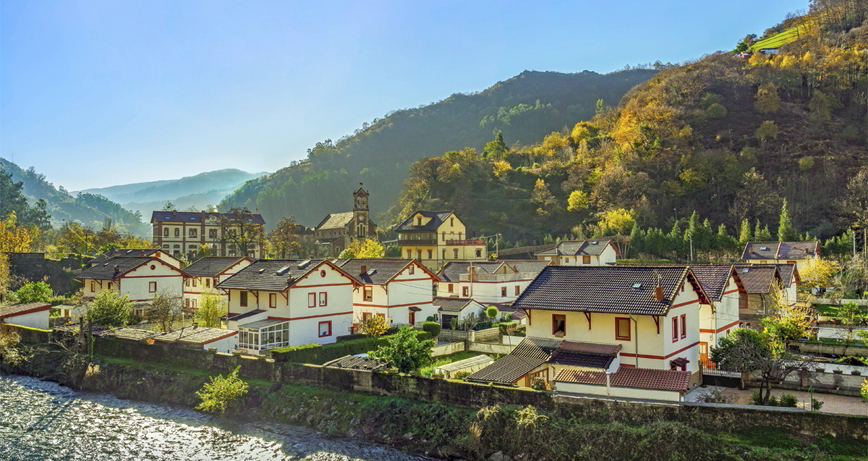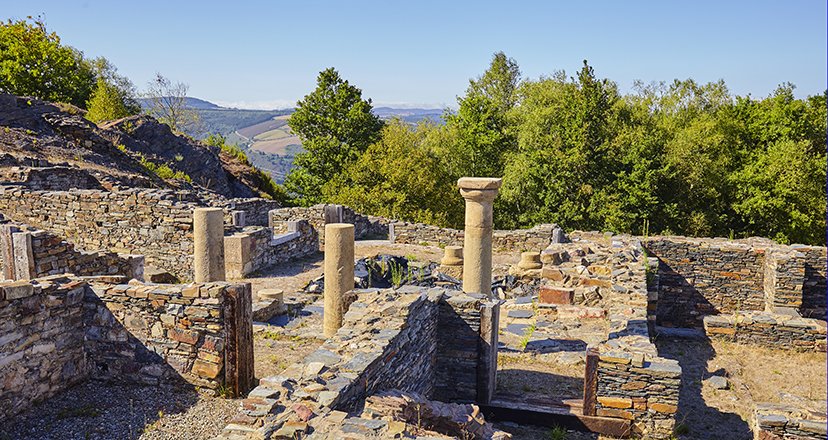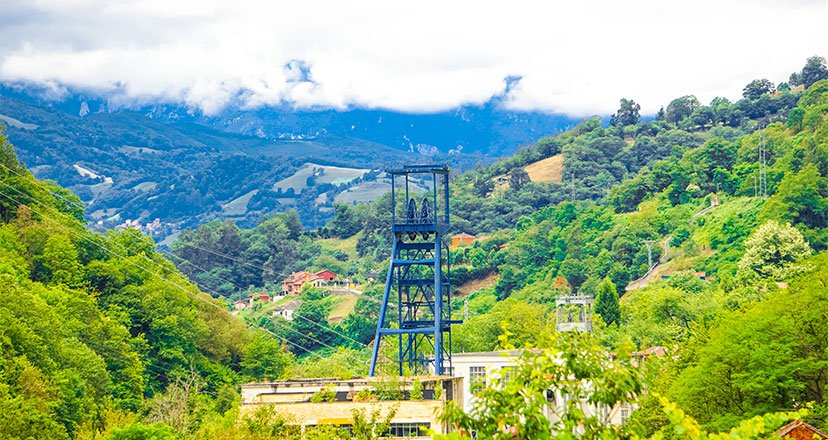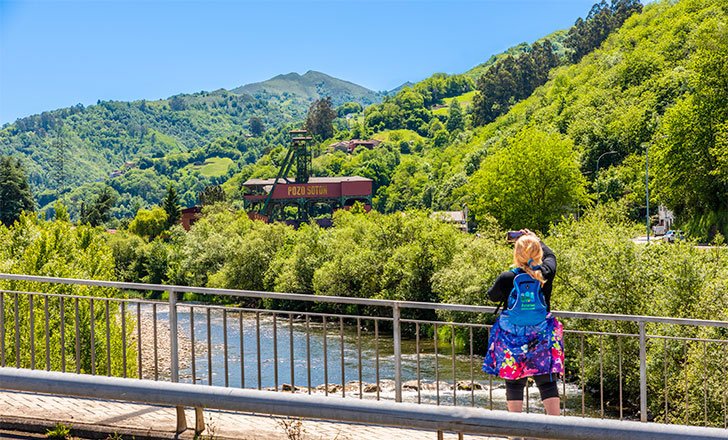Back Route to the Texeo Mines and the village of Rioseco
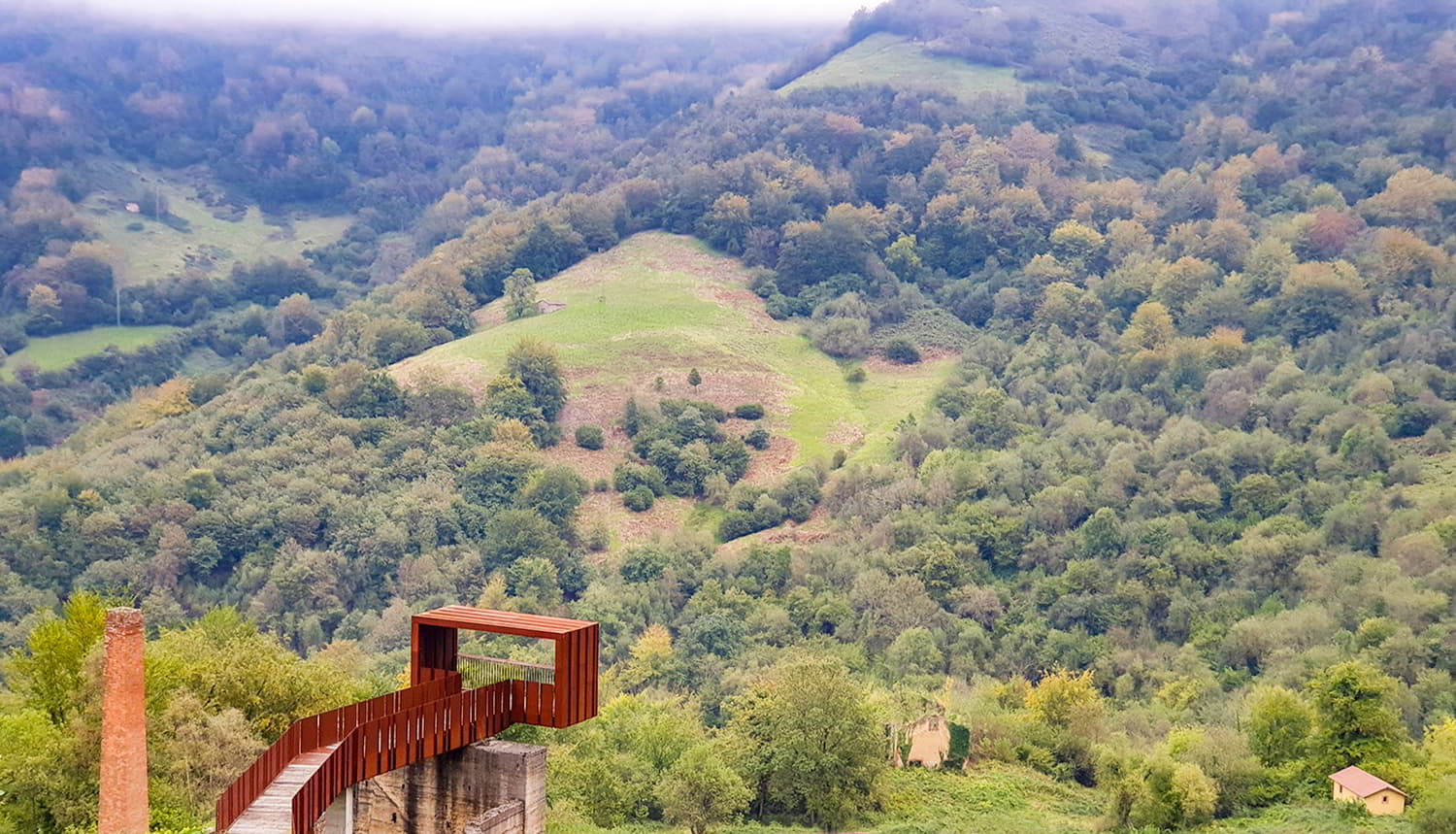
Route to the Texeo Mines and the village of Rioseco
The Texeo mines, located in the Sierra del Aramo mountain range and belonging to the council of Riosa, are considered to be the oldest in Europe. Here you can learn about the evolution of mining since prehistoric times.
We go into the eastern slopes of the Sierra del Aramo to visit the prehistoric site of the Texeo Mines and the Rioseco settlement, in the council of Riosa, the place of residence of the mining families between the 19th and 20th centuries.
The Texeo Mines, so called because of the number of yew trees/texos in the Sierra del Aramo, are considered to be the oldest and most important in Europe. After several excavations, 26 human skeletons have been found, confirming the practice of sacred rituals to make offerings to the mountain. The first Asturian miners used antlers, sticks and other tools with stone points to excavate the mountain in search of copper, a mineral that was in demand in primitive metallurgy and was widely used in the manufacture of beads 4,500 years ago.
The airstream that linked past and present
The most widespread theory is that Alejandro Van Straalen, director of the mercury mines of La Soterraña (council of Lena), rediscovered the Texeo Mines in 1888. While exploring the forest he noticed the movement of the branches of a tree. This swaying was caused by a current of air coming out of the vertical shafts dug by primitive men. However, recent studies attribute the discovery to Adrien Paillette in 1846.
Until the beginning of the First World War, the English company The Aramo Copper Mines Ltd, extracted cobalt and copper from the mines. Between the Dictatorship of Primo de Rivera and the Second Republic, extraction focused on the blue mineral. The cobalt was exported to other European countries to decorate porcelain tableware.
After a hiatus, the Asturian Mining and Metallurgical Company (METASTUR) ran the mine from 1947 to 1960, when it was finally closed down. However, nowadays there are companies showing interest in this area, so perhaps the future of the Texeo Mines is not yet completely written...
What you should know before doing the route
First and foremost, ignore the GPS. The navigator will try to take you to the mines, but it is not a passable road for any vehicle. The smartest option is to park at the entrance to the village of Ḷḷamo, taking care not to disturb any neighbours. Next to the fountain we find the first indications of the route.
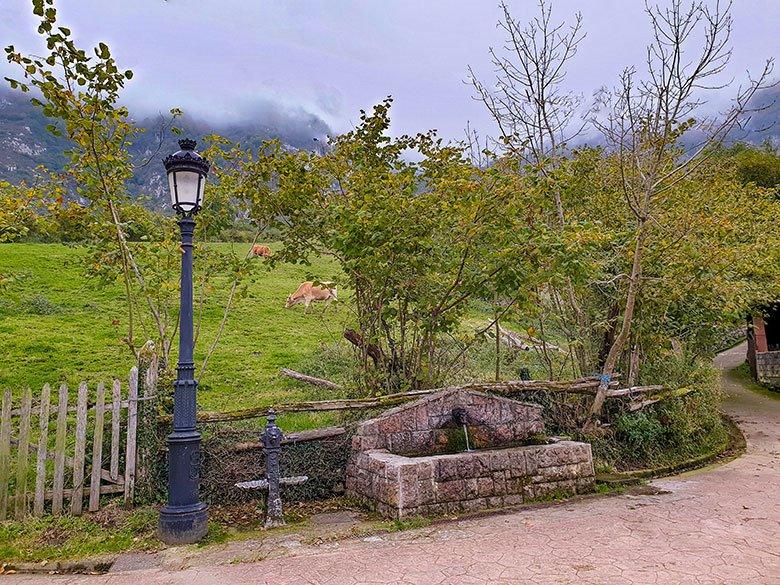
The distance between Ḷḷamo and the Rioseco Mining Village is 1.5 kilometres, in a continuous and steep ascent. The vegetation and the La Valluga stream make the route less tiring, as it is a shady and humid area even in summer.
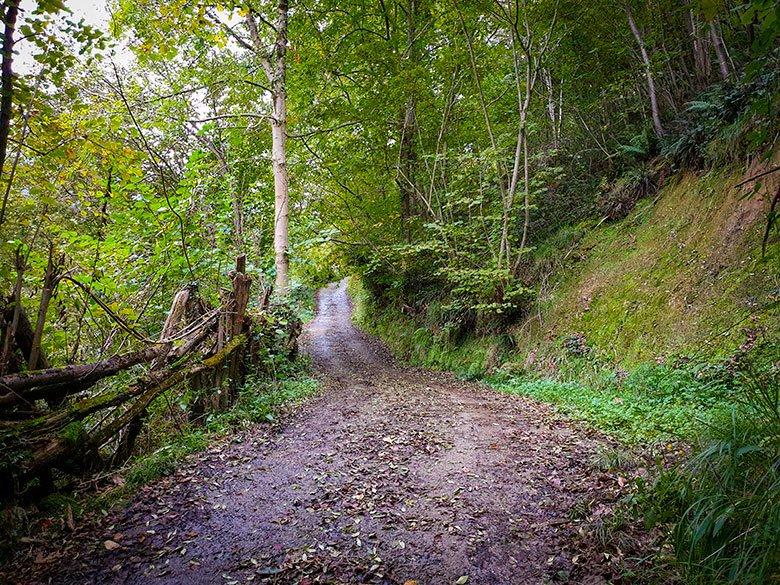
If you want to go up to the prehistoric site of Minas de Texeo, you have to walk 3 kilometres more, again with a constant ascent. As you can see, it is not a very long route, but, due to the constant ascent, it will take you 5 to 6 hours (the return is done by retracing your steps and, obviously, as it is downhill, it will be faster).
This route is not adapted, it is moderately demanding and, although you can do it with children who are used to hiking, you should take extreme precautions in the vicinity of the site, as it lacks safety elements.
Explore the Rioseco Mining Village and treatment plant
The Aramo Copper Mines Ltd began the construction of the Rioseco Mining Village in 1892. It built 3 blocks of houses for the miners, a building where the forge and a stable were located, another where the services of the settlement were concentrated (bar, office and commissary) and, away from all this - to highlight the social classes -, the Director's House.
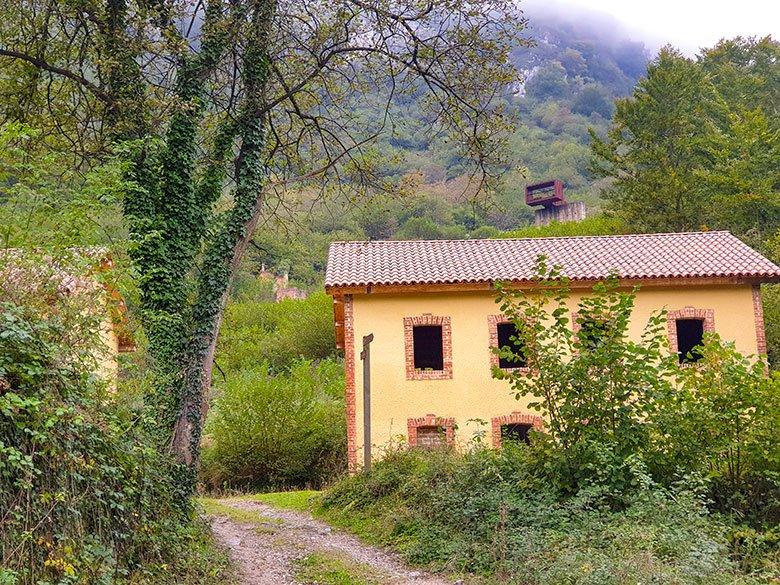
This village is a clear example of the industrial paternalism of the time. A brief stroll around it will show you the distribution of the space and the dimensions of the buildings that have been restored.
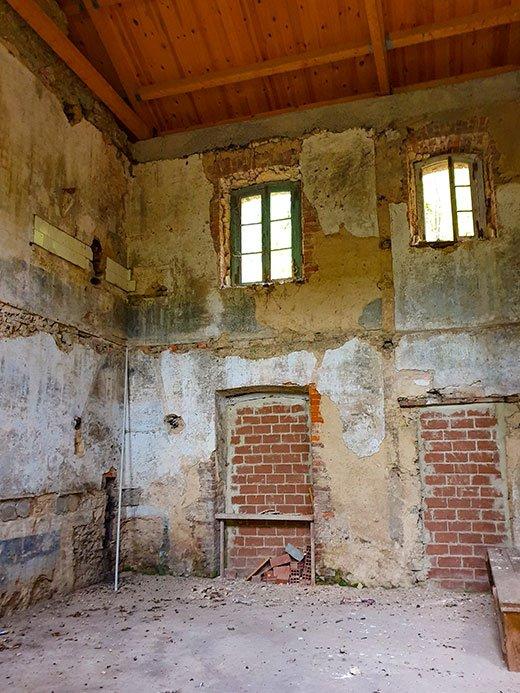
We continue along the road that skirts the village on the left side, until we reach the treatment plant, where the women of Rioseco used to work. There they separated the copper from the tailings on the concentration tables. To transport the ore, they used hoppers and vats - still visible today - and then milled it.
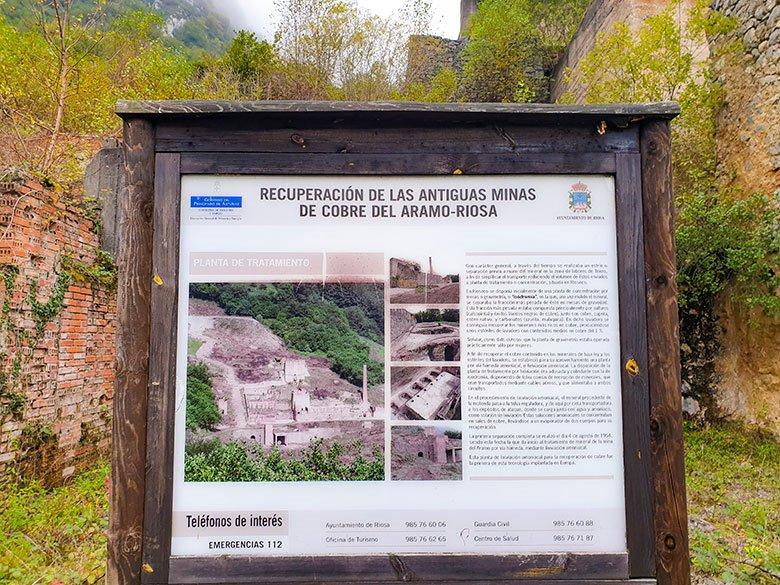
In 1954, six years before its definitive closure, the first ammonia leaching plant in Europe was installed at Rioseco, a system that is still in use today in mines all over the world.
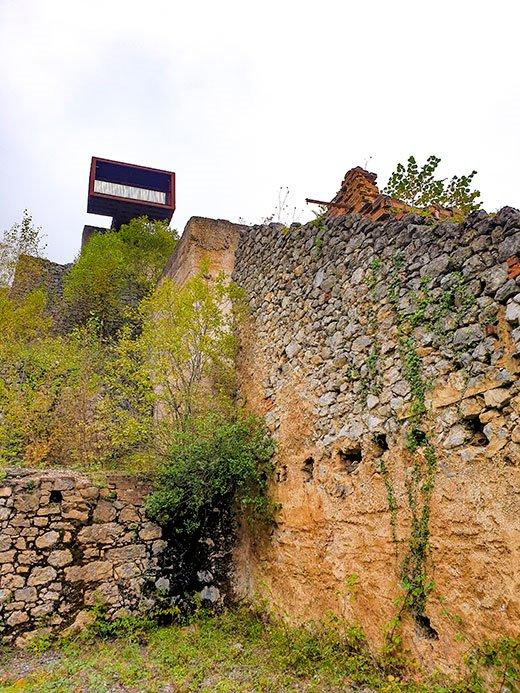
Take a glimpse of paradise at Mirador de Rioseco
We ascend until we reach some rails with an ornamental wagon. This iswhere the wooden and concrete footbridge begins, which ends in a metal structure that frames the landscape.

In 2015 the Mirador de Texeo was built over the hoppers of the Rioseco treatment plant and, although it was a controversial work with many detractors, the Mirador de Texeo has been nominated to win the "Building of the Year" Award by ArchDaily in 2022.
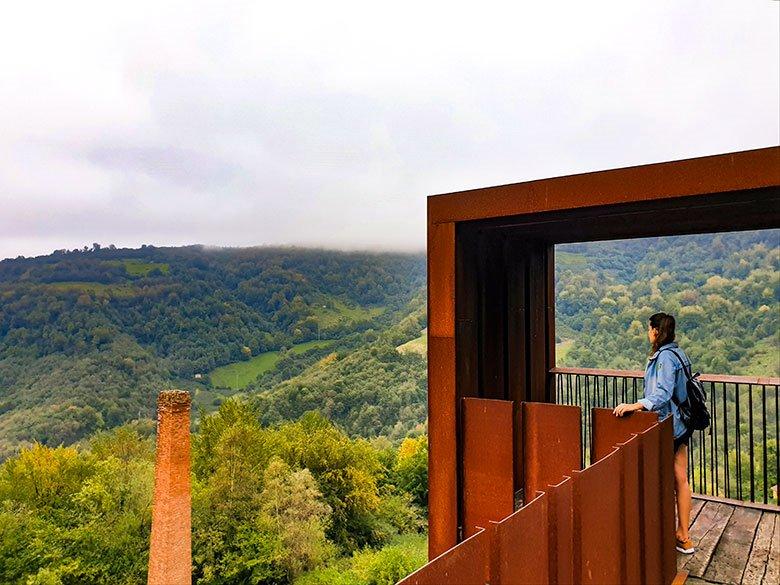
A few steps from the viewpoint is the access to the Socavón de Rioseco, a dragging gallery that METASTUR designed to connect the treatment plant and the Texeo Mines. In this way they avoided the costly use of the inclined plane and the conveyors that traversed the hillside.
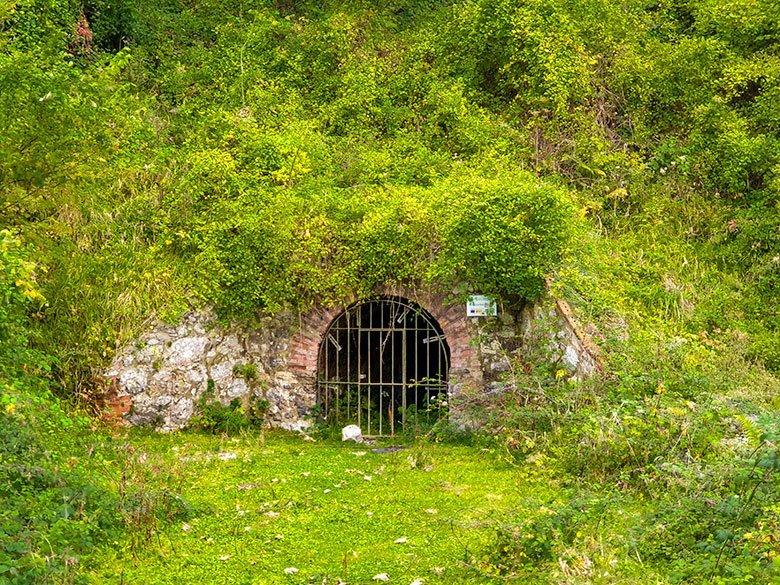
The access has a gate closing the passage, although, when the settlement was rehabilitated, 150 metres of the gallery were adapted for tourist use.
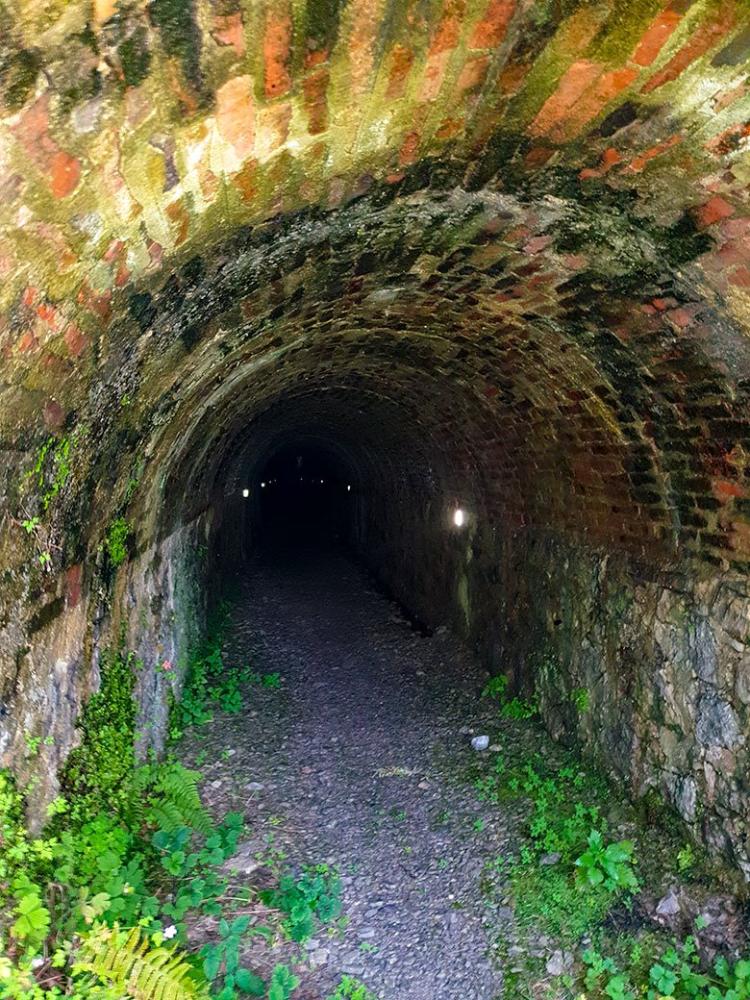
Right here we find a rest area with several tables and benches. They invite you to rest and have a snack, before continuing along the path to the prehistoric site of Minas de Texeo.
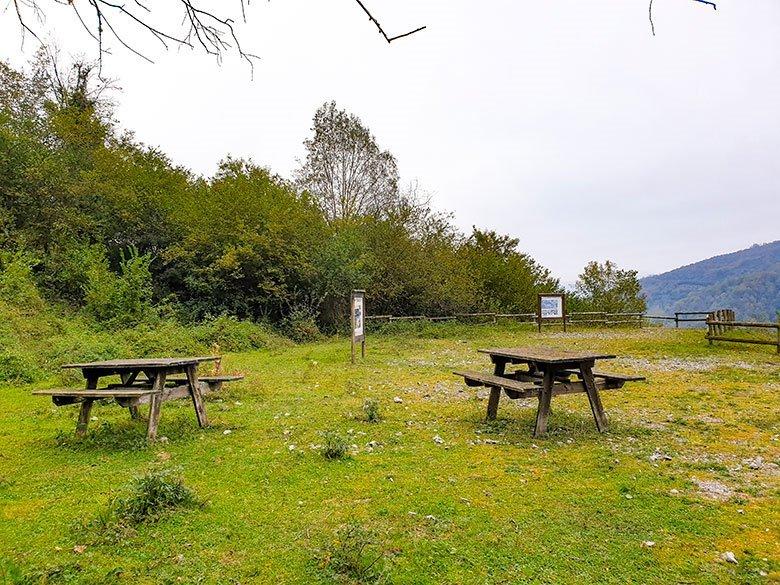
Visit the Prehistoric Monument of the Texeo Mines
We have three kilometres ahead of us to overcome 500 metres of unevenness. The route, up to the first level, follows the old cobbled path built in 1892 by The Aramo Copper Mines Ltd.
From this point onwards it becomes blurred and zigzags constantly. Along the way, you will come across El Seltu, where you can see part of the conveyor mechanism; the second level, where an electrical transformation tower is preserved and the Sayán Fountain deposit, whose water was used to wash the ore in the treatment plant; the Campa les Mines, where there is a mine shaft; and finally, on the fourth level, the prehistoric site of the Texeo Mines.
If you dare, you can go into the cave to observe small blue cobalt seams in the walls. If you prefer to be cautious, observe the stone pillars that were left to support the vaults, architecture with 4,500 years of history.
On a higher level, after crossing a wall, is the site of El Arrebolléu, which is smaller in size but even older. The path is not signposted, although, with a bit of luck, it will be well trodden.
Are you interested in Asturian industrial heritage?
In keeping with the mining theme , I recommend a visit to: the Bustiello Mining Village, founded by the Marquis of Comillas; the Arnao Mine, the first underwater mine in Europe; the Mining Museum and the Samuño Valley Mining Eco-museum. Or take the Green Route through the Turón Valley with a guided visit to Pozo Fortuna and Pozu Espinos. And if you feel like getting into the skin of a miner, visit the Pozo Sotón and delve into the dark and damp bowels of the earth.
And to do any route safely, don't forget to follow these tips.
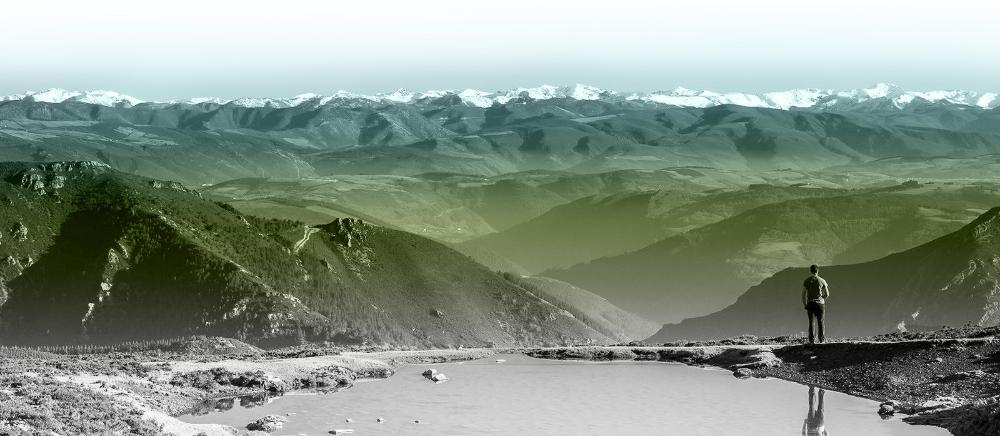
Subscribe to our newsletter and take advantage of offers, discounts, and news
Subscribe

